On the anniversary of a Chicago tragedy, CHM collections volunteer Robert Blythe uses one of our artifacts to tell the story of a highly respected fire chief who was killed in action.
A white leather fire helmet with a noticeable repair sits in the Museum’s collection as mute testimony to one of the greatest disasters to strike an American fire department. That helmet, sealed at the bottom in an early attempt to preserve its shape, and another in the collection belonged to James Horan, chief of the Chicago Fire Department from 1906 until his death on December 22, 1910.
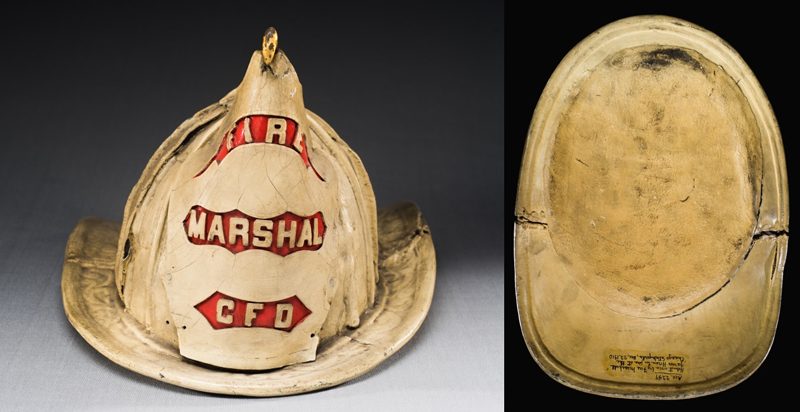
Horan’s fire marshal helmet, which was sealed at the bottom after his death. CHM, ICHi-168840 (left) and ICHi-168838
Around 4:00 a.m. on that cold day, a night watchman noticed black smoke pouring out of the six-story Nelson Morris meat packing company’s Beef Plant No. 7 in the Stockyards District. Several fire companies rushed to the scene. The firefighters had to stretch their hoses quite a long distance to reach the nearest hydrants, and a line of freight cars next to the plant hampered their efforts. Chief Horan arrived at 5:05 a.m. to personally direct the response. Within minutes, the east wall of the plant suddenly collapsed, instantly killing the chief and twenty other firefighters; three Nelson Morris employees also died.
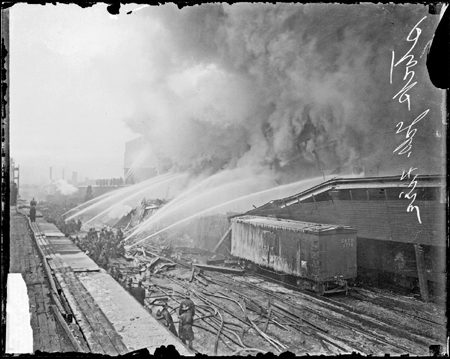
A row of railcars separated the firemen from the burning building, hindering firefighting efforts. Photograph by the Chicago Daily News, CHM, DN-0056315
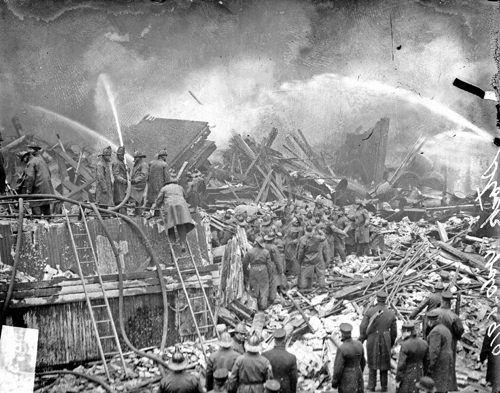
Firefighters crowd below the spot where Horan’s body was found. Photograph by the Chicago Daily News, CHM, DN-0056350
James Horan was a twenty-nine year veteran of the fire department, having started as a water boy in 1881 and rising through the ranks to become chief. He was an energetic, well-liked, and well-connected chief. Chicago’s mayor at the time, Fred Busse, had been a friend since childhood, and Horan was a favorite of businessmen and insurance underwriters for his tireless efforts to prevent fires and improve the department’s ability to fight them. Following the stockyards fire, Chicago went into mourning as funeral after funeral marked the holiday season. On December 26, a procession numbering in the thousands escorted a horse cart bearing the chief’s casket from his home near Ashland Avenue and 12th Street (now Roosevelt Road). Atop his casket his helmet was proudly displayed. The cortège made its way to Holy Name Cathedral, where Archbishop James Quigley celebrated a Requiem High Mass. Chief Horan was then buried at Calvary Cemetery in Evanston.
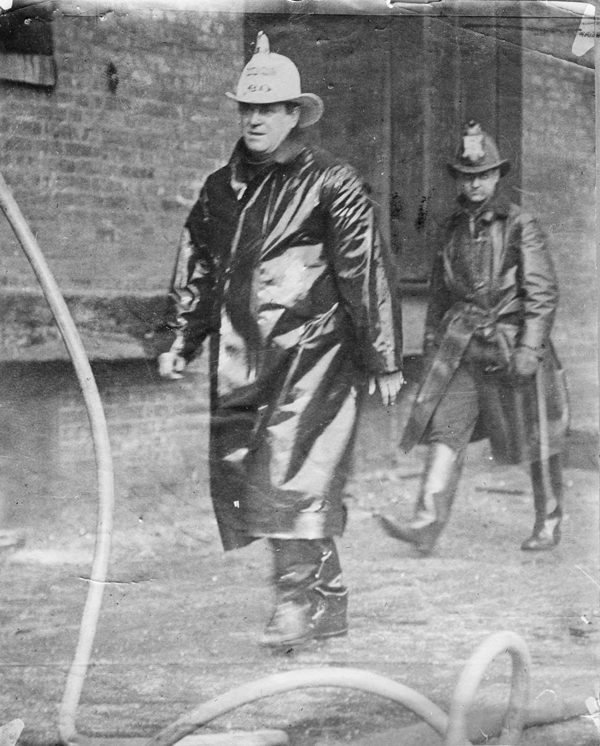
CFD chief Horan wears his helmet while at the scene of a fire, 1910. Photograph by the Chicago Daily News, CHM, DN-0008863
An interesting coda to the fire story involves the battle that firefighters’ widows and other dependents had to wage to receive the public donations made on their behalf. A committee of businessmen administering the relief fund decided that only the annual interest on the $211,000 that was collected would be made available. This was not enough for the widows to meet rent and mortgage payments, and they sued successfully to have the principal of the fund distributed among them.
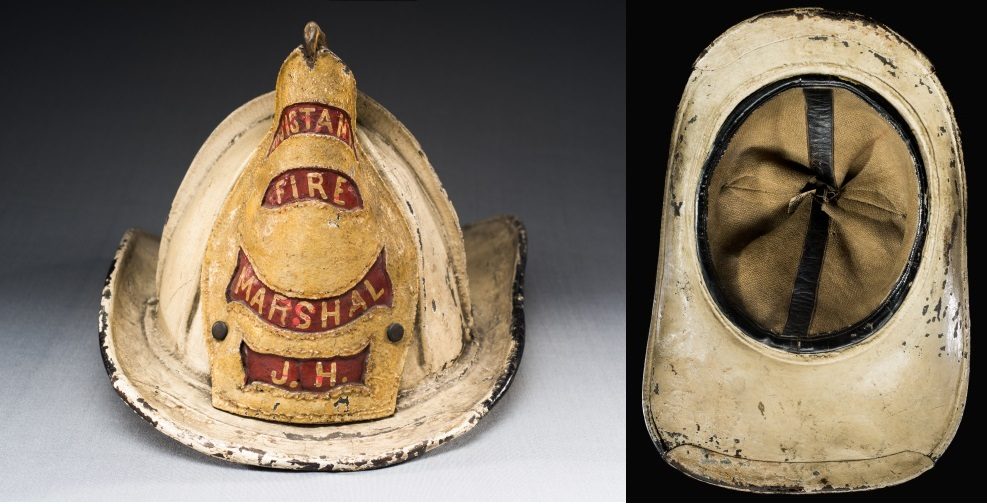
A fire helmet worn by Horan earlier in his career as assistant fire marshal. CHM, ICHi-68834 (left) and ICHi-168833
Horan’s widow donated the chief’s helmet to the Museum in 1947. A helmet from earlier in his career came from another donor in the 1930s. Together they remind us of those who died battling that long-ago fire.